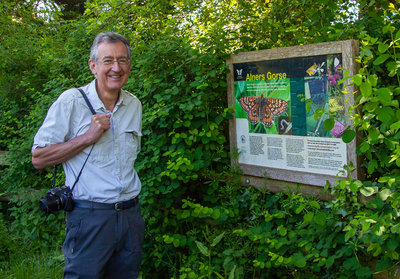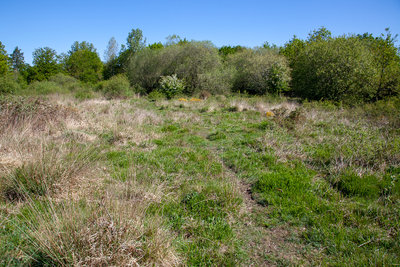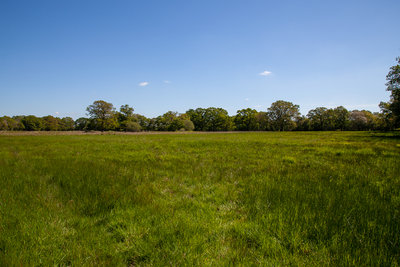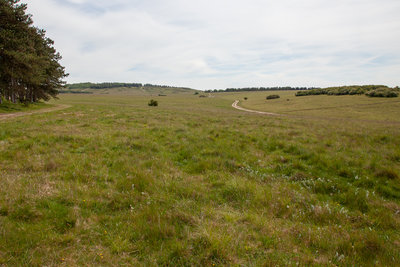Page 54 of 58
Re: Pete Eeles
Posted: Sat Oct 13, 2018 11:03 am
by Paul Harfield
Pete Eeles wrote: Due to space constraints, I'm having to limit a few things (e.g. no aberrations are included given the focus of the book) and parasitoids is one of those areas where we'll only be including those that are a significant element of the life cycle - such as those associated with the Holly Blue (Listrodomus nycthemerus), Large White (Apanteles glomeratus) and Marsh Fritillary (Cotesia bignelli).
Cheers,
- Pete
Hi Pete
'The Parasitoids of British Butterflies' .......that sounds like the title of your next book

Re: Pete Eeles
Posted: Tue Nov 20, 2018 4:14 pm
by Pete Eeles
Apologies for not responding, Paul! Yes, I would love to see that book, but the number of parasitoids of British butterflies is a VERY large number!
Cheers,
- Pete
Re: Pete Eeles
Posted: Wed Apr 10, 2019 9:16 pm
by Pete Eeles
Now is the best time of year to find elms, when they're in full flower. I've been meaning to get some elms near to my house identified for some time, so here are two different species or hybrids (I believe). The first is on the A4 at Thatcham:
And the second is a magnificent tree just off the A4:
All IDs welcome! I'll post some leafage when it's out!
Cheers,
- Pete
Re: Pete Eeles
Posted: Thu Apr 11, 2019 1:44 pm
by David M
Thanks for the heads-up, Pete. I've just received notification of some elms in my area so this could well be a plan given we've a cloudy weekend forecast!
Re: Pete Eeles
Posted: Thu May 23, 2019 7:59 am
by Pete Eeles
With the text of my book now written, this season is all about getting better photos of life stages, habitats etc. Since I'm currently 'in-between' jobs, I've spent this week running around to various sites to fill some gaps. Martin Warren kindly offered to show me around Alners Gorse in Dorset - what an amazingly diverse site, and highly recommended! The commonest butterfly, by far, was Marsh Fritillary. As you can imagine, I also learned quite a bit while talking with Martin! That was followed by a trip to the Cotswolds to meet up with David Simcox and Sarah Meredith to undertake the final review of the Large Blue, Small Heath and Small Blue species descriptions - always great company and, again, another learning experience. I thought I'd pretty much read everything there was to be read about the Large Blue, but David and Sarah are a mine of information!

- Martin Warren

- Small-leaved Elms near the reserve entrance. Lots of nibbled leaves but no WLH larvae on show!

- Mixed scrub in the middle of Alners Gorse

- Rooksmoor that adjoins Alners Gorse, which also had Marsh Fritillary flying
Yesterday I met up with Angela Leaman who showed me around parts of Salisbury Plain, somewhere I've never really ventured since I've never been sure where you're allowed to go, or where the best spots are. Again, Marsh Fritillary seemed to pop up just about everywhere, especially in a couple of hotspots - along with Dingy and Grizzled Skippers, Green Hairstreak, Common Blue, Brown Argus (including an egg), Small Heath and Small Copper.

- Salisbury Plain, with the ever-present distant sound of gunfire
Cheers,
- Pete
Re: Pete Eeles
Posted: Thu May 23, 2019 7:46 pm
by Wurzel
I know what you mean about The Plain Pete - I seem to only visit areas around the edges (Sidbury, Tilshead, Larkhill and Shipton Bellinger) as well for exactly that reason. There's also the added concern that whilst out looking for butterflies you could get your leg blown off by unexploded ordinance


Hope you're still in one piece

Have a goodun
Wurzel
Re: Pete Eeles
Posted: Thu May 23, 2019 8:24 pm
by Matsukaze
Nibbled elms - it's mostly not White-letter Hairstreak doing the nibbling! I'm currently rearing larvae of Brick, Winter Moth, Dun-bar, Satellite, Lesser-spotted Pinion, November Moth agg, Svensson's Copper Underwing, Common Quaker, Twin-spotted Quaker and a couple of tortricids I haven't yet put a name to, all from elms and found in the last month or so. Of the butterfly, not a sign, though the adults seemed to do well enough last year. That said, I seem to find fewer WLH larvae each year.
Re: Pete Eeles
Posted: Fri May 24, 2019 10:28 am
by Pete Eeles
I'm still in one piece, Wurzel!
That's really interesting, Chris. I hope you post photos in due course.
Yesterday afternoon I spent an hour at Greenham Common watching a Grizzled Skipper egg laying. Incredibly, an egg was laid on an Agrimony plant that was already occupied, with a 1st instar larva found in its shelter (with its egg shell on the outside) - with the shelter formed by silking together the leaf edges (silk contracts as it dries, causing the edges to come together). Not a single egg was laid on the (abundant) Wild Strawberry.
Cheers,
- Pete
Re: Pete Eeles
Posted: Fri May 24, 2019 2:24 pm
by David M
Some familiar territory in those habitat images, Pete.

I'm equally intrigued as to why the Grizzled Skipper ignored the wild strawberry, especially when there was so much of it around. I guess we humans will never understand everything regarding butterfly survival strategy.
Re: Pete Eeles
Posted: Thu May 30, 2019 7:25 pm
by NickMorgan
Wow! Fantastic pictures. I really can't wait to see the book!
Re: Pete Eeles
Posted: Wed Jul 31, 2019 9:15 pm
by Pete Eeles
Thanks both - and apols for not responding, David! I suspect that the Wild Strawberry was used in places, just not where I was looking (and they've used that foodplant in previous years here for sure).
Anyways ... today I started my annual White Admiral larvae hunt, as part of the monitoring I do at Pamber Forest in Hampshire. I also created a video to help others looking to find larvae, which you can find at
https://www.youtube.com/watch?v=v3p7EjWGQig. Enjoy!
Cheers,
- Pete
Re: Pete Eeles
Posted: Sun Aug 04, 2019 6:24 pm
by David M
Great tutorial, Pete. Now, if only I had colonies of White Admiral near to me I could go and look for larvae...


Re: Pete Eeles
Posted: Sun Aug 25, 2019 8:42 am
by Pete Eeles
Thanks David!
I spent an hour or so checking up on the White Admiral larvae I'm monitoring, and most have now gone into hibernation. Unfortunately, thanks to a new job that I started in May, I've had very little time to undertake extensive searches, so will only be following a few through the winter. This 3rd instar (note the brown rather than black head) is McCoy, from a Star Trek honeysuckle spray (I like to name each group since it helps me remember the individuals). Kirk and Scotty still present, but the search for Spock continues ...

Cheers,
- Pete
Re: Pete Eeles
Posted: Sun Aug 25, 2019 9:20 am
by Padfield
Let's hope your Enterprising critters haven't discovered warp speed and transporters, Pete!

A lot of caterpillars I know use these devices ...
Guy
Re: Pete Eeles
Posted: Sun Aug 25, 2019 9:49 pm
by Charles Nicol
Pete Eeles wrote:Thanks David!
I spent an hour or so checking up on the White Admiral larvae I'm monitoring, and most have now gone into hibernation. Unfortunately, thanks to a new job that I started in May, I've had very little time to undertake extensive searches, so will only be following a few through the winter. This 3rd instar (note the brown rather than black head) is McCoy, from a Star Trek honeysuckle spray (I like to name each group since it helps me remember the individuals). Kirk and Scotty still present, but the search for Spock continues ...

IMG_1826.jpg
Cheers,
- Pete
Let's hope they live long & prosper

Re: Pete Eeles
Posted: Sat Nov 30, 2019 9:54 pm
by Pete Eeles
It's been a while since I posted in my diary, but today I had a really warm reception at the Suffolk AGM, the last in a series of presentations I've delivered of late. It was great to see so many UKBers in attendance, and a special thanks to Bill Stone (Billbutterfly) for a wonderful endorsement of my book!
It was also a delight to meet up with Guy whose own book can now be ordered on Amazon (
https://www.amazon.co.uk/Butterflies-Vi ... 688&sr=8-1). It looks amazing - well laid out and substantial - which I'll be reviewing in due course.
Cheers,
- Pete
Re: Pete Eeles
Posted: Sat Nov 30, 2019 10:08 pm
by Padfield
It was very good to see you again too, Pete - first time on Crown British territory, I believe!
For those who haven't had a chance to see Pete's presentation at one venue or another (or, shame on you, read his book ...), it was predictably fascinating stuff, seasoned with his characteristic blend of retiring modesty and passionate enthusiasm.
I only took one picture with Pete in it. Behind him, diminishing piles of his
Life Cycles of British and Irish Butterflies, aka Frohawk 2.0, and spread out on the nearer table a copy of Frohawk 1.0 rescued from a skip! I shall have to start rummaging through skips ...

Guy
Re: Pete Eeles
Posted: Sun Dec 01, 2019 2:33 pm
by kevling
Pete,
It was wonderful to meet you yesterday and thank you for attending our Branch AGM. Your talk was inciteful and entertaining. I particularly loved the account of the Large Blue larva.
Guy,
Can I also say how happy I was to meet you yesterday too.
Kind Regards
Kev Ling
Re: Pete Eeles
Posted: Sun Dec 01, 2019 6:53 pm
by Padfield
Likewise, Kev. It was very good to meet you - and put a face to a few other names as well.
Guy
Re: Pete Eeles
Posted: Sun Dec 01, 2019 8:01 pm
by Pete Eeles
Thanks Guy and Kev - yes, a most enjoyable afternoon in good company!
Cheers,
- Pete
